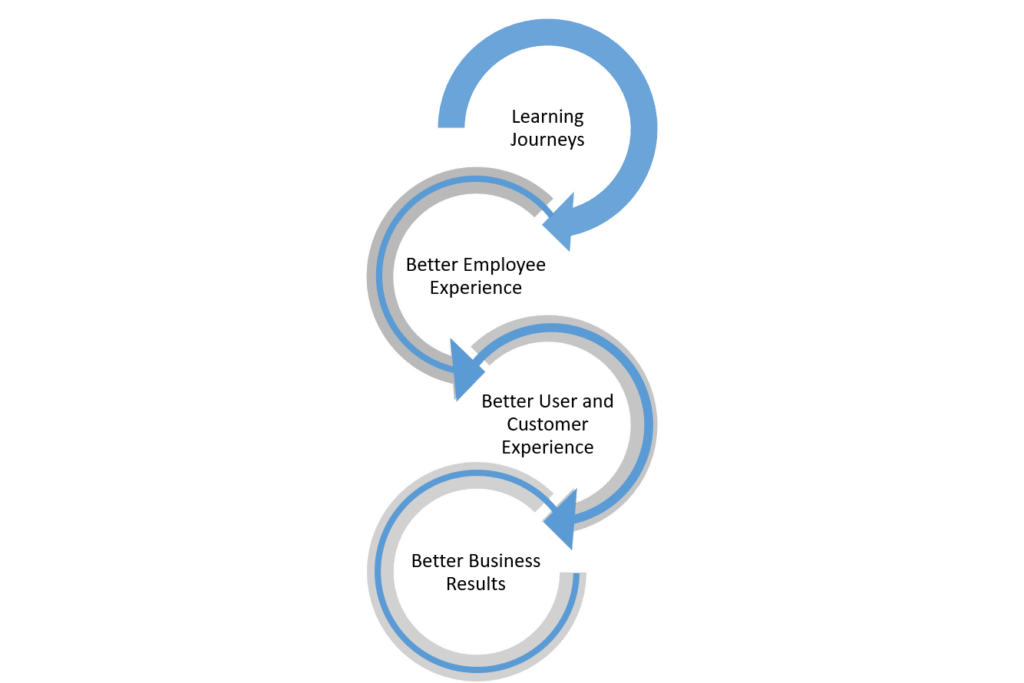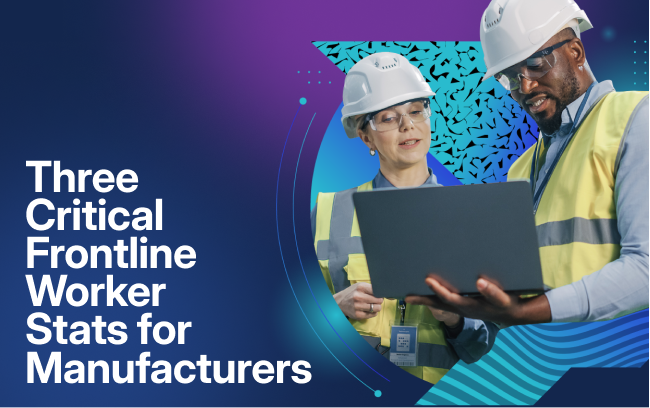April 27, 2021
4 Min. Read

It’s every company’s desire to achieve better business results. To get there, they realize they need at least two things: a great product and happy customers. And of course, neither of those can be successful without a skilled workforce.
But company leaders also realize that it doesn’t stop there. Organizations aren’t a “set it and forget it” kind of operation. They need constant work to ensure they are increasingly successful year over year.
As a result, many businesses set their sights on investing in a better experience—for their users, customers, and employees. They want to ensure that people perceive their company positively and that any interactions with their products, workforce, and leadership are top notch.
So why do companies need to focus on learning journeys right now? And what do they have to do with improving a customer’s or employee’s experience at a company?
In short, there are three main reasons company’s need to focus on improving their learning journeys. Continue reading to learn more.
Companies need to emerge stronger, better from the pandemic
As the pressure increases for companies to maintain their competitive advantage in the “new normal,” they must make careful decisions about how they will invest in each of these areas to succeed in the future.
“Experience” is a term we hear often these days, made even more familiar by replacing the word with the letter “X.” For example, user experience becomes UX, customer experience becomes CX, and employee experience becomes—you guessed it—EX.
Usually, department executives receive a budget to allocate funds to initiatives that will help them achieve their business goals. Technology and engineering would handle improving UX. Customer support would improve CX, and typically HR would focus on EX.
But there is another function in the organization that companies should consider as their primary focus this year if they want to achieve meaningful, measurable business results with lasting impact. And that is learning and development.
Learning and development teams drive progress
While some may see L&D teams simply as “the ones who do the training,” their unique set of capabilities and reach across all departments can be the difference between a company’s success and failure.
As the saying goes, “knowledge is power.” Learning is something companies can and should rely on as a driving force for success in all areas of the business—including UX, CX, and EX.
But it’s important to note that we’re not talking about just any learning.
Just as technology, engineering, and product development teams place a large emphasis on UX for the products and services they create, L&D teams should treat the learner experience (LX) with the same level of importance. To do this, they need to start thinking outside the traditional “training” box.
And that’s where learning journeys come into play.
Learning journeys have a powerful impact on business results
Learning journeys are a far cry from “check-the-box” training. They are the how, when, where, and why a learner interacts with content. They bring in factors like engagement, collaboration, application, and meeting learners where they are in the flow of work.
Learning journeys require a “design thinking” approach, and L&D teams are responsible for continuously rethinking this approach in order to offer the best LX possible.
Well-designed learning journeys consist of three elements:
- The business—understanding priorities and solving business challenges
- The role—improving performance in one’s direct area and the overall business
- The self—developing experience, knowledge, competencies, and beliefs
If all three of these elements are taken into account, learning journeys have the power to drive individual, customer, and organizational change to help you achieve maximum business results.

Design your own learning journeys
If you would like to learn more about designing a better learning journey and how to get started, download our free e-book: The Importance of a Well-Designed Learning Journey.



